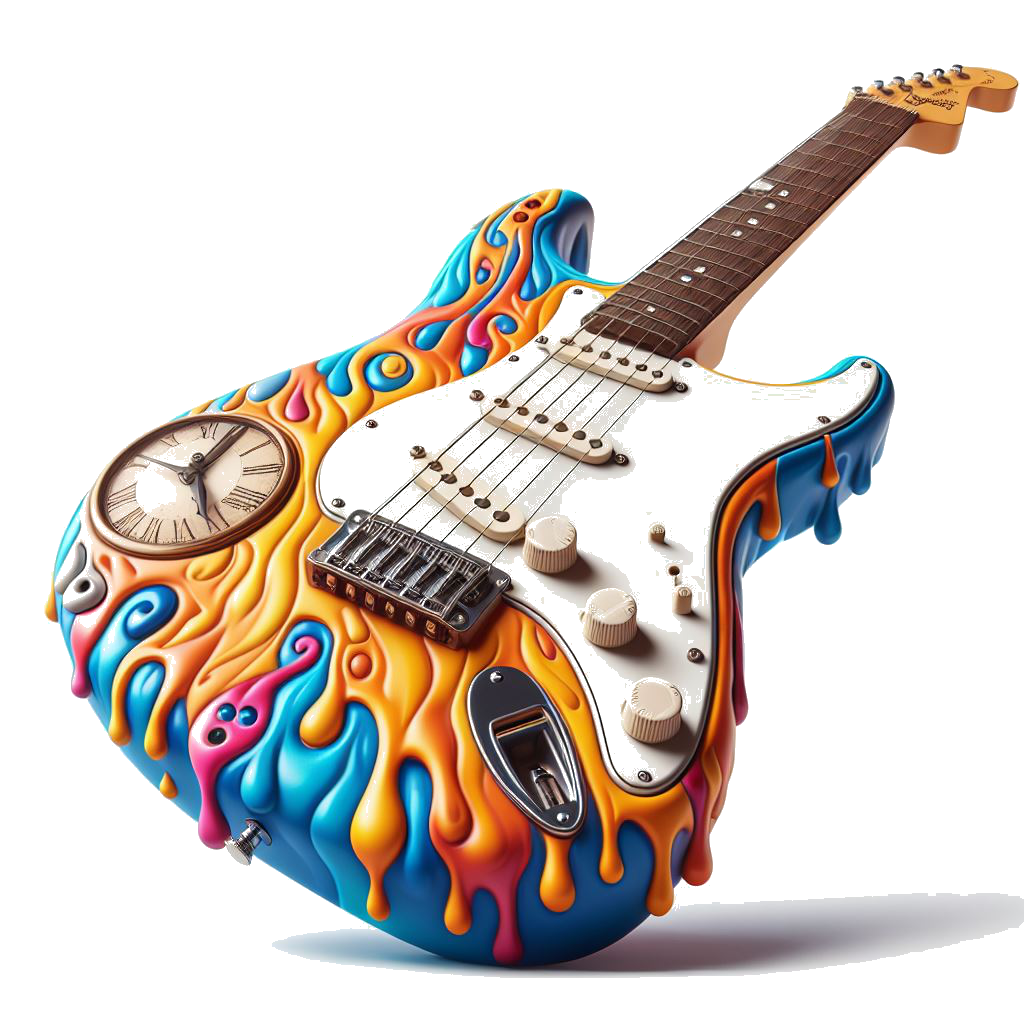Learning how to play guitar can be an incredibly rewarding and enjoyable experience. If you’re starting out, one of the best ways to get acquainted with the instrument is by learning easy guitar tabs for beginners. Guitar tabs are simple representations of songs that allow you to understand the notes and chords quickly and easily. With some practice and patience, you’ll soon be playing your favorite songs easily. In this blog post, we’ll show you how to get started mastering easy guitar tabs for beginners.
Why Learn Easy Guitar Tabs?
Learning to play guitar can be daunting, especially for beginners. There are so many chords, notes, and techniques to learn, and it can feel overwhelming. This is where learning easy guitar tabs can make a huge difference. Guitar tabs are a simplified way of representing songs on the guitar, using numbers and symbols instead of traditional sheet music notation.
So why should you learn easy guitar tabs? Well, for starters, they are a great way to familiarize yourself with the instrument. Unlike traditional sheet music, guitar tabs visually represent where to place your fingers on the fretboard, making learning and memorizing songs easier. This can be especially helpful for beginners still building their finger strength and agility.
Additionally, learning guitar tabs allows you to start playing songs right away. Instead of spending months practicing scales and chords, you can jump right into playing your favorite songs. This can be incredibly motivating and exciting as you see yourself progress and improve with each song you learn.
Understanding Guitar Tablature
Understanding guitar tablature is essential for anyone learning how to play the guitar. Guitar tablature, or simply “tabs,” is a system of notation that represents songs and notes on the guitar using numbers, lines, and symbols. Tabs visually represent where to place your fingers on the fretboard, making it easier to learn and play songs. Tabs consist of six lines representing the six strings of the guitar. Each number on a line represents a specific fret on that string.
For example, if there is a “3” on the third line, it means you need to place your finger on the third fret of that string. It’s that simple!
Tabs also include other symbols and notations to indicate different techniques, such as hammer-ons, pull-offs, bends, and slides. These symbols add depth and complexity to your playing, allowing you to replicate the nuances of the original song. One of the advantages of learning guitar tabs is that you can easily visualize and understand the fingerings for guitar chords in tablature. Chords are represented by multiple numbers stacked vertically, indicating that you should play all of those notes simultaneously. By mastering the tab notation for chords, you’ll be able to play songs with ease and accuracy.
How to read Guitar Tabs
So, let’s dive in and learn how to read guitar tabs!
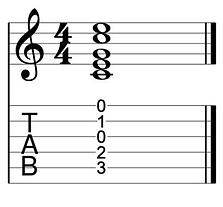
First, look at the six lines that make up the tablature. Each line represents one of the strings on the guitar, with the bottom line representing the lowest-pitched string and the top line representing the highest-pitched string. The numbers on the lines indicate which fret to place your fingers on. Here is an example:Now, let’s talk about guitar chords in tablature. Chords are represented by multiple numbers stacked vertically on the same line. This indicates that you should play all of those notes simultaneously. It’s like forming a shape with your fingers on the fretboard, and the numbers on the tabs tell you which frets to press down.
In addition to numbers, guitar tabs also include other symbols and notations. These symbols indicate various techniques, such as hammer-ons, pull-offs, bends, and slides. Understanding these symbols adds depth and complexity to your playing, making your guitar sound more like the original song.
Learning how to read guitar tabs may seem overwhelming at first, but with a bit of practice, it becomes second nature. Start by finding a simple song you want to learn and look for tabs online or in a guitar tab book. Take your time to decipher the tablature and understand the finger placements. As you become more comfortable with reading guitar tabs, you’ll be able to tackle more complex songs and expand your repertoire.
Common Tab Symbols and Notations
Now that you understand how to read guitar tabs, it’s time to delve into the world of common tab symbols and notations. These symbols and notations add depth and complexity to your playing, allowing you to replicate the nuances of the original song.
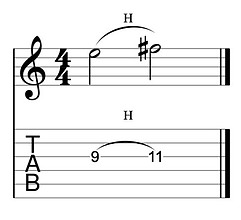
One of the most common symbols you’ll come across in guitar tabs is the hammer-on symbol, indicated by a curved line connecting two numbers.
A hammer-on is when you play a note without picking it, but instead, you use another finger to quickly press down on a higher fret. This technique creates a smooth and fluid sound.
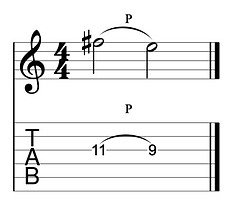
Another common symbol is the pull-off symbol, represented by a curved line with a small “p” above it. A pull-off is the opposite of a hammer-on. Instead of using a higher finger to play a note, you pull your finger off the string, producing a softer sound.
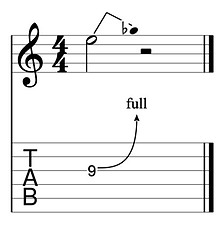
Bends are another important technique to familiarize yourself with. A bend is when you push a string up or down to change the pitch. This is indicated by an upward or downward arrow next to a number, representing the number of steps to bend the note.
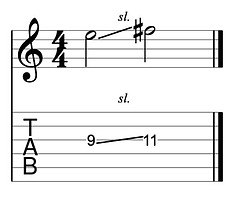
Slides are also commonly used in guitar tabs and are represented by a diagonal line connecting two numbers.
A slide smoothly transitions between notes by sliding your finger along the string. This creates a seamless and gliding effect.
These are just a few of the many symbols and notations you may encounter in guitar tabs. Each symbol adds its own unique flavor and style to the music, allowing you to create a more authentic and dynamic sound. By familiarizing yourself with these symbols and notations, you’ll be able to bring your guitar playing to a whole new level.
So, grab your guitar, find some tabs incorporating these symbols, and start experimenting. Remember, practice makes perfect, so don’t be afraid to make mistakes and learn from them. Before you know it, you’ll be effortlessly incorporating these symbols and notations into your playing, impressing yourself and others with your musical skills.
Easy Guitar Tabs for Beginners to Try
Now that you have a good grasp of how to read guitar tabs and understand the basics of tablature, it’s time to test your skills and try some easy guitar tabs for beginners. These tabs are perfect for those just starting out on their guitar journey, as they focus on simple chords and melodies that are easy to play and learn.
One great place to start is with popular songs that have simple chord progressions. Songs like “Wonderwall” by Oasis, “Ironic” by Alanis Morissette, and “Wish You Were Here” by Pink Floyd are all perfect choices for beginners. These songs feature basic guitar chords in tablature that are easy to master and provide a solid foundation for your guitar-playing skills.
If you’re looking for something more challenging, try tackling a song with a simple melody or riff. “Smoke on the Water” by Deep Purple and “Always on the Run” by Lenny Kravitz are great examples of songs featuring iconic guitar riffs that are fun to play and impressive to others.
As you become more comfortable with playing guitar tabs, don’t be afraid to branch out and explore different genres and styles of music. Challenge yourself to try a song from a genre you’ve never played before, such as a blues or jazz piece. This will help you develop a well-rounded set of skills and broaden your musical horizons.
Tips for Learning and Using Guitar Tabs
1. Start with simple songs: When you’re just starting out with guitar tabs, it’s important to choose songs that are within your skill level. Look for songs that feature basic chords and melodies that you can easily pick up. As you gain more experience, you can challenge yourself with more complex songs.
2. Practice regularly: Consistency is critical when it comes to learning how to play guitar. Set aside regular practice sessions to work on your tablature skills. Even just 10-15 minutes a day can make a big difference in your progress. The more you practice, the more comfortable and confident you’ll become with reading and playing guitar tabs.
3. Break it down: Don’t get discouraged if you encounter a difficult section in a song. Instead, break it down into smaller parts and practice each part separately. Focus on getting each section right before moving on to the next. Take your time and don’t rush the learning process.
4. Use a metronome: A metronome is a valuable tool for developing your sense of timing and rhythm. When learning a new song with guitar tabs, use a metronome to help you stay on beat and play at a steady tempo. Start slow and gradually increase the speed as you become more comfortable.
5. Watch tutorials and play along: Countless tutorials available online can help you learn how to play specific songs using guitar tabs. Watch these tutorials and play along with them to better understand the timing and technique involved. This can be a great way to learn new songs and improve your skills.
6. Experiment and make it your own: While learning songs as they’re written is important, don’t be afraid to experiment and make them your own. Add your own style and flair to the music, and don’t be afraid to make mistakes along the way. Playing guitar is about expressing yourself, so have fun and let your creativity shine.
Resources for Finding Guitar Tabs
Finding guitar tabs is easier than ever with the abundance of resources available online. Whether you prefer to learn from video tutorials, tablature websites, or mobile apps, there are plenty of options to choose from. Here are some resources to help you find guitar tabs and further enhance your learning experience.
One of the most popular websites for guitar tabs is SongSterr. This website has a vast collection of tabs for songs from various genres and artists. You can search for specific songs, browse popular tabs, and even contribute your own tabs to the community. Song Sterr also offers a plus membership to access additional features like interactive tabs and ad-free browsing.
For video tutorials and lessons, YouTube is an excellent resource. There are countless guitar channels and instructors who provide step-by-step tutorials for songs, techniques, and even entire courses. Some popular guitar tutorial channels include GuitarLessons, GuitarZero2Hero, and Marty Music.
If you prefer a more interactive learning experience, mobile apps like Yousician and GuitarTuna are worth exploring. Yousician offers a comprehensive learning platform with lessons, exercises, and guided practice for guitar players of all levels. GuitarTuna, on the other hand, is a popular tuning app that also provides basic chord diagrams and scales to help you get started.
Additionally, don’t forget about the power of community forums and social media groups. Websites like Reddit and Facebook have active guitar communities where you can ask questions, share your progress, and find recommendations for new tabs and resources.
